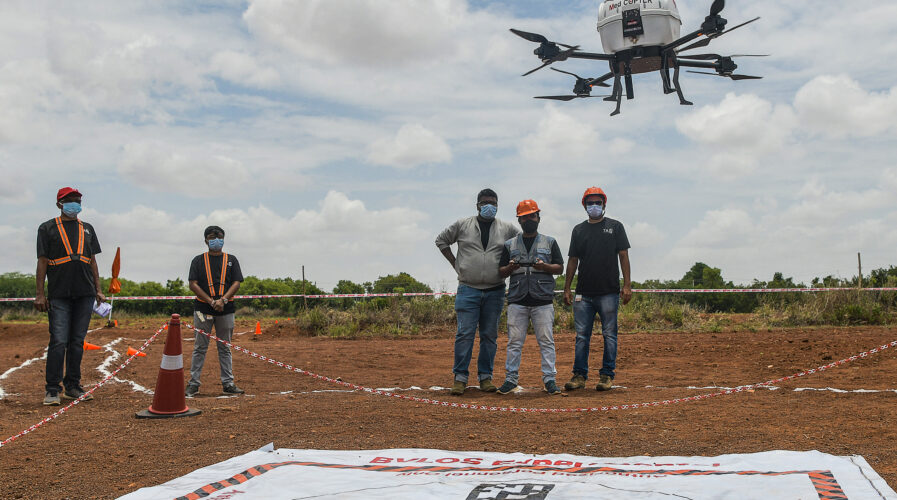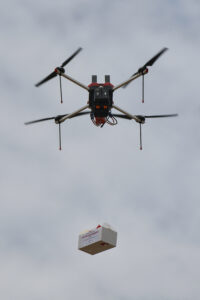
[ad_1]

(Photo by Manjunath Kiran / AFP)
Drone technology continues to see innovations with new verticals and use cases being developed to solve more problems. In the past, drones were only used for surveillance purposes. Today, they can do a lot more.
Drone technology is being adapted for delivery services, agriculture, telco maintenance, and even as the basis for flying vehicles. Some of these use cases have been successful around the world and in Asia as well.
With the global market for drone technology projected to reach US$ 21.9 billion by 2026, China and the US represented a big chunk of it followed by Japan, Canada, and Germany. In fact, China continues to bring in innovations and use cases with the drone in verticals that were once thought never possible.
For example, China unveiled Robo-Shark, a military drone capable of operating at high speeds with a low sound for deep-sea exploration and anti-submarine warfare.
In healthcare, drone technology is creating endless possibilities as well. According to a UNICEF report, drones in healthcare can be used for transportation of medical equipment and vaccines, aerial spraying as well as public space monitoring.
As such, countries like India, Indonesia, and Malaysia have been using drones to help deal with the COVID-19 pandemic for different reasons. In Malaysia, drones are being used for the surveillance of large gatherings in specific areas. If an area has too many people, the drone will sound an alarm and request the crowd to disperse.
In Indonesia, a group of drone enthusiasts is using their aerial skills to provide contactless medicine and food delivery to COVID-19 patients isolating at home. As Indonesia is geographically spread out across thousands of islands, the ‘Makassar Recover Drone Medic’ team is working with the local coronavirus task force to deliver medicine at least five times a day.
Mobility restrictions remain in place in many Indonesian cities, including Makassar, in a bid to contain a devastating wave of COVID-19 infections driven by the Delta variant. It was reported that during the peak of the latest outbreak in July, they made up to 25 rounds of deliveries in one day.

(Photo by Manjunath Kiran / AFP)
Mobility restrictions are also a big problem in India. With a population of nearly 1.4 billion people, India saw nearly 34 million cases, with over 450,000 deaths reported. Despite accelerated vaccination efforts in the country, getting vaccines to those in remote locations is still a big challenge.
However, drone technology is changing this. In Hyderabad, drones commenced the delivery of COVID-19 vaccines, beyond the visual line of sight. Typically, drones are only allowed to be flown within the line of sight with anything beyond that posing a risk to the drone.
The Times of India reported that the drone delivery service is a joint initiative of the Telangana government, World Economic Forum, NITI Aayog, and Apollo Hospitals. The project is expected to pave the way for more healthcare drone delivery services around the country. Each drone is capable of carrying a payload of 4kg and 200 doses of COVID-19 vaccines throughout the 6.6km flight.
For UNICEF, drone technology in healthcare can only be successful if the health supply chain is fully understood. This includes understanding the potential use cases, locations, routes, commodities, and transportation modalities, as well as having a cost-effective strategy on drone optimization.
“The effective use of technology cannot be scaled without building an appropriate support system and enabling environment. In order to operationalize the use of drones for pandemics or, in general, health supply chain work, enabling environment becomes crucial,” stated the report.
As such, drones may just revolutionize the healthcare system and help provide aid to those in remote locations. While the technology is still in its testing phases, improvements in drone technology, as well as the network, will be crucial in ensuring the processes are seamless in the future.
[ad_2]
Source link